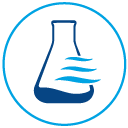
Standard Microbiological Testing Methods for Food and Beverages
We encounter microorganisms all of the time in our daily lives. Many of those microorganisms cause no harm or health problems for humans. However, others are dangerous to human health causing disease, infection, nausea, sickness and even death. Because there are a variety of microbes that pose health risks to humans, and because many of these can be found in our food and water supplies and are capable of rapid reproduction under ideal circumstances, most nations have set high standards for microbiological testing of food and drinks to safeguard our health.
What is microbiological testing? A brief overview
The purpose of a microbiological testing laboratory is to detect, locate, identify, isolate and/or eradicate microorganisms in another substance. These microorganisms can be found in human blood or tissue, in water, soil, in our foods and beverages or in many other sources. Microbiological testing of our foods is a food safety management issue that is strictly regulated and controlled by states and by federal agencies for the protection of citizens. There are both conventional and rapid procedures used in testing foods, the conventional methods are most common and always follow internationally accepted and recommended methods. These methods, though time consuming, have proven effective in food and beverage industries.
Lab testing procedure in the food & beverage industry
Quantitative microbiological analysis of our food and beverage industries aims to test with accuracy and timeliness samples of products consumed by the public in order to identify dangerous contaminants that could result in infection, illness or disease. This analytical process usually begins with a small sample of what is being tested becoming homogenized (mixed thoroughly) and a sample or multiple samples of the mixture, (subsamples) being diluted and plated in petri dishes where the microorganisms can proliferate. Given some time under ideal growth conditions the microorganisms can become isolated and identified as benign or as dangerous. This is done to ensure the quality and safety of the foods and drinks being sold in our stores and markets.
What are the standard methods used in microbiological testing?
The standard or conventional microbiological testing methods of our foods include, enzyme-linked immunosorbent assay (ELISA), enzyme-linked fluorescent assay (ELFA), fluorescence in situ hybridization (FISH), and conventional, real-time, and multiplex polymerase chain reaction. All of these standard methods were developed to identify levels of foodborne microorganisms. Most of the standard methods require a 25 g sample of whatever food sample needs testing. Often other tests are used to confirm the results of the standard tests, particularly when dangerous microorganisms are identified.
Microbiological testing laboratories perform many steps in the process in order to follow the methodology accepted by the FDA and other organizations committed to food safety. These standard procedures include careful weighing of samples, standard dilution of each sample, pipetting of precise volumes into petri dishes, and the incubation of these dishes for specific times and at prescribed temperatures. Each of these steps includes a host of regulatory requirements to minimize variations of outcomes due to any irregularities in the process.
If dangerous microbes are found in a sample through the testing process, the process moves to the presumptive stage, in which a particular pathogen of concern is highlighted for identification. This requires another process in which the conditions for growth of the identified pathogen are enhanced while other microorganisms are inhibited. Once growth of the potential pathogen is accelerated and a sample is available, then it is carefully identified. This identification is made using multiple methods such as biochemical identification, mass spectrometry, serology and bacterial genetic analysis.
Why is microbiological testing necessary for the food and beverage industry?
Keeping what people eat and drink safe for consumption is vital for a safe, healthy and trusting population. We want to trust that what we are eating and drinking will not hurt us or even kill us. Testing is also beneficial for the food industry. When people get sick eating a product produced by a large company, lawsuits follow, news agencies dig into the problems and plaster them on the headlines, mass recalls are implemented and people get angry and lose trust in that business.
This is why food microbiology testing methods and microbiology lab test types are standardized and regulated on state and federal levels. We want to keep our people safe and we want to keep our food and beverage industries flourishing and growing. Frequent and careful testing of our products is a way to accomplish both of these desires.
Conclusion
Another important thing to recognize is that the number of people with health vulnerabilities (conditions such as diabetes) is rising and that people are living longer. Both of these categories of people are more susceptible to the damaging effects of dangerous microbes. Which means that microbiological testing methods will only have to become better, faster and more accurate to help these populations moving forward.






